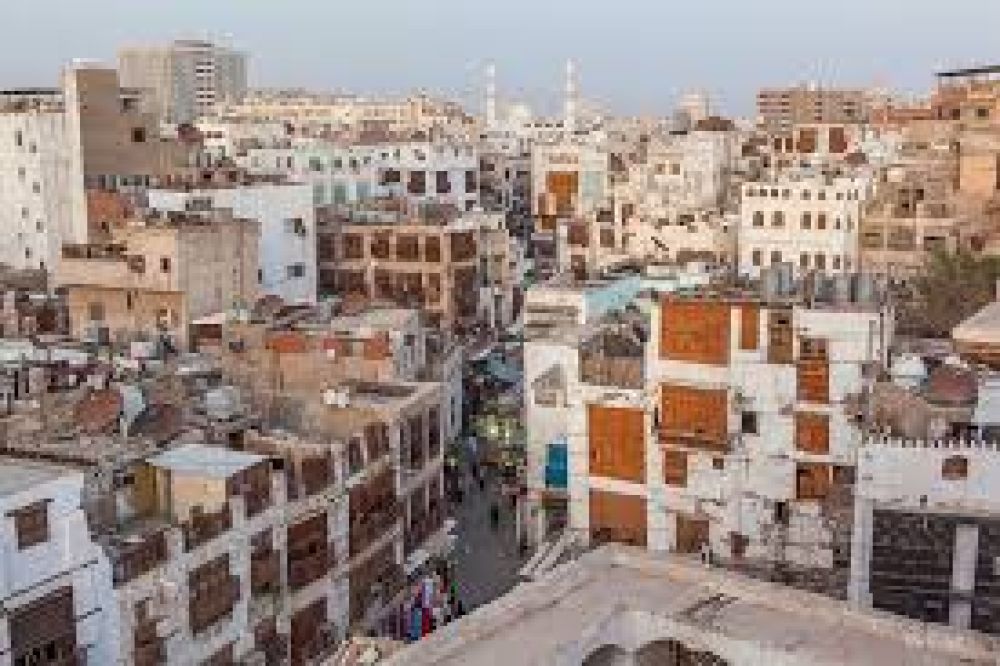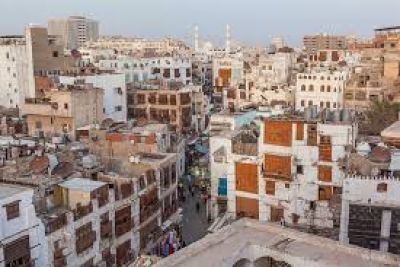

The Abdul Raouf Khalil Museum in Jeddah offers a rich tapestry of the cultural, historical, and religious heritage of the region. This museum showcases a fascinating collection that spans over several epochs, from the age of fishing and pearling to the Islamic era and the foundation of the modern Saudi state. Visitors can explore a variety of exhibits, including ancient artifacts, Islamic manuscripts, and a display of traditional Saudi Arabian dress. The museum provides an excellent narrative of the various civilizations that have thrived in the Arabian Peninsula. With carefully curated galleries, the museum serves as a testament to the Kingdom's commitment to preserving its heritage and educating both locals and tourists alike about the country's dynamic history.
Embarking on a walking tour through Al-Balad, visitors can immerse themselves in the heart of Jeddah's historic district. This area, also known as Old Jeddah, is adorned with traditional Hijazi architecture exemplified by the distinctive rawashin, or wooden lattice windows. Explorers will traverse the ancient, narrow streets and discover hidden gems including local markets, or 'souqs', courtyards, and vintage homes. The tour unveils the stories behind the culturally significant buildings like the Nassif House while giving an insightful glimpse into Jeddah's past. As a UNESCO World Heritage site, Al-Balad is a treasure trove of history, offering an enchanting journey through time and the progression of Saudi culture.
Souq Al Alawi is nestled within the Al-Balad district and offers a true sense of the traditional Saudi shopping experience. This bustling market is a place where vendors hawk an array of goods, from spices and textiles to gold and traditionally crafted items. As you wander through the market, the scents of incense and aromatic spices merge to form the quintessential Arabian ambience. The charm of Souq Al Alawi lies not only in its rich selection of goods but also in the interactions with local traders who often share tales of their time-tested wares. Haggling is expected and can be quite an enjoyable part of the experience. Exploring this market provides a glimpse into daily life and the mercantile history of the region.
The Naseef House is a cultural landmark in Al-Balad that was once the home of one of Jeddah's most prominent families. Today, it has been meticulously restored and transformed into a museum that offers insights into the affluent lifestyle of Jeddah's elite during the early 20th century. The four-story structure, built from coral stone, is a fine example of traditional Hijazi architecture, featuring open courtyards, large wooden doors, and intricate balconies. Visitors can admire the fusion of cultural influences in the decor, explore historical artifacts, and enjoy the panoramic views of Old Jeddah from the rooftop terrace.
Athr Gallery is a contemporary art space located in the heart of Al-Balad that has played a pivotal role in nurturing the art scene in Jeddah. Known for its pioneering exhibitions and cultural events, the gallery showcases the works of emerging and established Saudi artists as well as international talents. Visitors to Athr Gallery can engage with thought-provoking art in various mediums and participate in workshops, lectures, and other cultural activities. The gallery space itself is a testament to the blend of historic architecture and modern design, reflecting the city's evolving artistic identity.
The Baeshen House, located in Al-Balad, is a noteworthy structure of historical importance that offers an insight into the region's architectural progression. Once a prosperous family's dwelling, this house has been converted into a heritage museum, reflecting the developments in residential design as influenced by trading affluence. The well-preserved home contains elements typical of Hijazi architecture, such as intricate woodwork and coral stone construction. Visitors can enjoy the reconstructions of traditional family life and gain knowledge about the dwelling customs and social habits of the times.
A culinary tour in Al-Balad is a taste adventure through Jeddah's historic heart, offering an opportunity to indulge in a variety of traditional Saudi dishes and regional delicacies. Visitors can expect to tantalize their taste buds with local favorites such as Kabsa, Matbucha, or Mutabbaq. Food stalls and family-run eateries conceal hidden culinary treasures waiting to be discovered. Such a tour is not just about the food, but also learning about the history and origins of the dishes, thus, it's a great opportunity to connect with local culture through the universal language of good food.
In the heart of Al-Balad, art enthusiasts have the unique opportunity to delve into the ancient art of Arabic calligraphy. Local masters of the craft often offer workshops to share their skills and love for this expressive art form. Participants will learn about the various styles and techniques of Arabic calligraphy and practice creating beautiful script themselves. This hands-on workshop is not only a creative endeavor but also an immersive cultural experience, as calligraphy holds a significant place in Arabic tradition and history.
Al-Balad’s historic mosques, such as the ancient Al-Shafei and Al-Basha mosques, welcome visitors to explore their serene interiors and facades adorned with periods' architectural detailing. While these mosques primarily serve as places of worship, their historic significance and contribution to the Islamic heritage of the region make them noteworthy stops on any tour. Visitors to these mosques can reflect on the tranquil atmosphere, marvel at the unique minarets, and appreciate the longstanding traditions of Islamic art and architecture.
Al-Balad is home to several ancient wells that have been pivotal to the survival and development of Jeddah. A visit to these wells can provide a fascinating insight into the traditional methods of water sourcing and conservation employed in the arid climate of the Arabian Peninsula. Some of these wells, such as the Ayn Zubaida, date back centuries and are linked with historical narratives and local legends. While many of these wells are no longer in use today, they represent the ingenuity of the forebears and serve as physical remnants of the city's adaptation to its environment.
